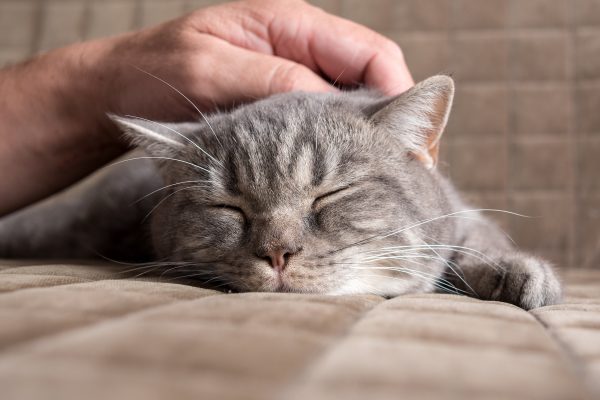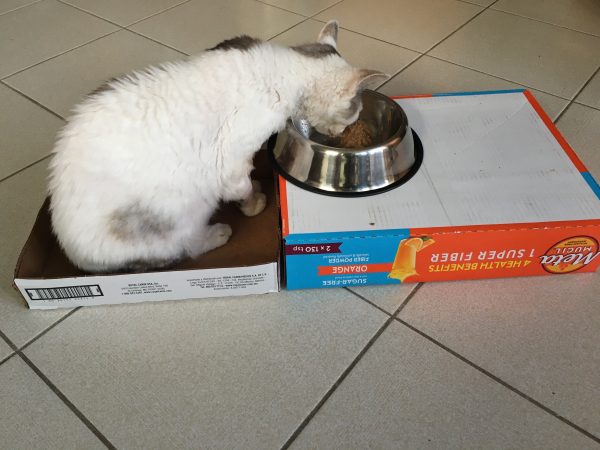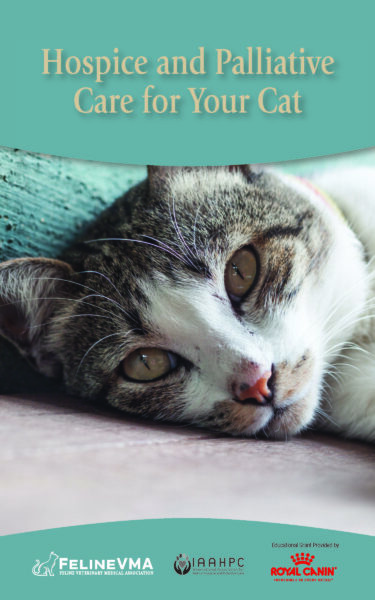Hospice care focuses on the quality of life of a cat who has an advanced and/or life-limiting illness and helps them live as comfortably as possible, instead of trying to cure them. Palliative care focuses on relief from pain and other symptoms associated with an illness. Hospice and palliative care can help cats and caregivers during a very difficult time. Here’s a five-step plan to guide you:
Five Steps to Prepare for Hospice and Palliative Care
Step 1:
Think about and understand your needs, beliefs, and goals. Tell your veterinarian about your financial, emotional, and physical strengths and limitations, as well as the time you can devote to caring for your cat each day. Be honest so a realistic plan can be created. Talk with them about the balance between quality of life and length of life for your cat, goals for treatment, and when/whether to consider an end-of-life option.
Step 2:
Learn about the illness and what your cat will need. Your veterinarian will explain your options. Understand what your cat will need before deciding what to do, then learn how to take care of your cat. Ask questions. Call your veterinarian if you have questions or if anything changes.
Step 3:
Have a care plan. With the help of your veterinary team, develop a plan that addresses your cat’s physical, emotional, and social needs. Consider what you can do, what your cat needs, how much time it will take, and how much it will cost. Try to keep your routines as normal as possible. Notice if your cat starts to lose interest or hides more, and contact your veterinarian.
Step 4:
Learn how to take care of your cat. Your veterinarian will show you how to care for your cat. You might need to move your cat’s food, water, and litter boxes so they can get to them easier. Learn how to give medicine to your cat.
Step 5:
It’s okay to grieve. Your cat is a member of your family, and it is hard to see them get old or sick. It is okay to start to miss them while you are taking care of them and to mourn them when they are gone. Your feelings matter, and you deserve support.
Quality of Life
You may ask yourself: “How will I know it’s time?” It helps to know about quality of life (QOL). Quality of life refers to all aspects of a cat’s life, including their physical and emotional health. Because cats cannot tell us what is happening, you will need to watch for changes which include signs of pain, nausea, thirst, breathlessness, and fear-anxiety. You know your cat better than anyone, so share any changes with your veterinarian.
Comfort Care
Comfort care includes your cat’s physical, emotional, and social needs. Pain can cause your cat to hide; eat, move, or groom less; have trouble standing, walking, or getting up; squint; sleep in strange positions; or have increased sensitivity to touch and/or show aggression. It can also change how often they use the litter box. Cats are good at hiding pain, so recognizing these signs will help so your cat does not suffer. Your cat might also show fear-anxiety, pain, and frustration. Try to make sure that they feel safe and call your veterinarian with any changes.
Taking Care of Your Cat’s Needs
When caring for your cat, providing comfort and easy access to resources is key. Here are some guidelines:
- You may have to move food, water, litter boxes, etc. if your cat can’t get to them anymore, especially if they are up or downstairs, and it is difficult for your cat to get to them. Make sure there is more than one way to enter and leave any area. If you have questions, show your veterinarian pictures or videos of your home.
- Your cat needs a safe space (or two) for resting and sleeping with sides which allows them to feel hidden. Having a place to hide helps your cat
cope. Many cats like safe spaces that are high up. Your cat might need pet steps or a ramp to reach these. Your cat needs food, water, litter boxes, resting and sleeping areas, and a place to scratch. Put litter boxes where your cat spends the most time, and away from noise and other pets. If your cat has trouble getting into and out of a litter box, look for a box that has one side lower than the others. Your cat’s scratching post needs might change; if your cat cannot scratch using a vertical post, try a horizontal one. If your cat cannot scratch at all, their claws will need trimming by you or a veterinary practice team member. - If your cat wants, you can play with them at least twice a day. They may not pounce on a wand toy, but they might like to watch it move. Your cat may want to spend time with you, but make sure there are hiding options your cat can easily reach.
- Since cats like to have all four paws on the floor, don’t pick up your cat. If you need to move them, do it while they are in a cat bed, or loosely wrap a towel or blanket around them.
- If your cat is not grooming themselves, try using a soft brush. Don’t pull out mats. Your veterinarian can show you how to trim small mats (large mats should be groomed professionally).
- If you plan to hide medicine in a treat, start by giving your cat the treat without the medicine so they get used to it. If your cat will not take medicine in a treat, don’t hide it in your cat’s food; that might cause your cat to stop eating. Be gentle and try to get your cat to come to you for medicine. Ask your veterinarian for Cat Friendly options such as smaller/melting tablets or suitable flavoring that can be added. Always reward with treats, petting, or anything else that makes your cat happy.
Nutrition in the Hospice and Palliative Care Patient
You might notice changes like weight loss, poor appetite, vomiting, or diarrhea. These can affect your cat’s quality of life. It can be difficult to get your cat to eat and drink enough but don’t force it. Medications can help control nausea and stimulate appetite. If your cat is not getting proper nutrition, it may be helpful for your veterinarian to place a feeding tube, which you can use to give medications, nutrition, and fluids. Provide food your cat enjoys. Older cats tend to like warm wet food. If your cat has lost their sense of smell, they might like stronger-smelling foods.

Lickable treats, tuna, or broth (without onions or onion powder) may help them eat. Put the dishes at a level comfortable for your cat. Dishes on the floor prevent falls, but if they are raised up a little, they can provide a more comfortable eating position for your cat. If your cat is not drinking enough water, consider adding warm water to their food. You can also offer multiple water sources, such as water fountains or dripping faucets, or use flavor enhancers like tuna juice or low-sodium chicken broth.
End of Life
Sadly, there will come a time when you have done all you can to make your cat comfortable, but they are not experiencing a good quality of life anymore. Talk with your veterinarian about how to plan for your cat’s passing so it can be a peaceful transition. They will explain all the steps and give you time to ask questions and say goodbye. They will also help you with grief counseling resources if you would like support.


